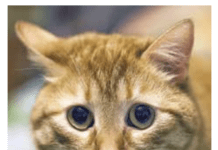We all know about the importance of keeping our cats inside our homes. Scientists and other experts have convinced us that indoor cats generally live longer and stay healthier than those that wander around in the great outdoors. But while indoor life may be healthier for our feline friends, its not necessarily better – at least, not from a cats point of view. Thats because all too often the indoor cat cant do what its meant to do.
Cats were born to be hunters, and the concept of working for food is natural to them, explains Pam Johnson-Bennett, author of Hiss and Tell: True Stories from the Files of a Cat Shrink. When you eliminate stimulation for an indoor cat, he may possibly become overweight or depressed, or he might become frustrated with no outlets for his pent-up energy.
Board certified veterinary behaviorist Vint Virga, DVM, agrees. A cat that lives indoors may not get to express certain innate parts of its behavioral repertoire, he says. Such cats are more likely to groom themselves excessively, chew on themselves, or engage in other destructive behaviors.
Does this mean that a cat can only be happy outdoors? Not in the least. Experts suggest that a kitty can enjoy being inside if its human companion is willing to bring some of the excitement of outdoor life to the cats indoor environment. In fact, the human caregivers at our nations zoos already do this for the wild cats and other animals that live there in a set of techniques called environmental enrichment.
What is environmental enrichment?
According to the website of Hogle Zoo in Salt Lake City, Utah, environmental enrichment is a term used to describe various activities that animal keepers utilize to encourage natural behavior from the animals under their care. Captivity often deprives zoo animals of opportunities to behave as they would in the wild.
Enrichment – hiding food, providing toys, and even giving road kill to certain animals – restores some of these opportunities, which can make for happier, more contented zoo residents.
This concept has gained credence at zoos throughout the United States. In fact, the American Zoo and Aquarium Association (AZA) recommends that a formal written enrichment program … which promotes species appropriate behavioral opportunities for zoo animals be adopted as part of an individual zoos application for AZA accreditation.
What does this have to do with domestic cats? Plenty. An indoor cat also lacks opportunities to engage in natural behaviors such as hunting and climbing. But with a little forethought, much can be done to restore such opportunities to the cat that has come in from the cold.
Principles of environmental enrichment
There are no rigid rules about how to enrich a cats environment, but experts point to several principles that can help your indoor feline companion reclaim her inner kitty:
Recreate the hunt. The human companion of a bored indoor cat needs to provide a way to meet the cats motivation to hunt, Virga explains. The quickest, easiest way to recreate that thrill is to eliminate free access to food. Instead of placing it all in a dish that the cat can eat at mealtime, hide three or four portions around the house. Possible hiding places include under the bed, behind the TV set, under furniture, and inside an empty toilet paper roll that has been taped shut at both ends.
Think in 3-D. Cats are three-dimensional creatures, Virga points out. So dont just think of your home as floor space; think also in terms of elevated space. Give them some opportunities to climb. Ideas for climbing structures include big cat trees sold in specialty stores, carpeted bookshelves placed just a few inches below the ceiling, and cat walks. Virga also suggests installing slings, caves, and perches.
Vary the environment. The quickest way for a cat to become bored with life indoors is to do things the same way every day. To forestall such ennui, Virga suggests rotating toys, placing the cats bed in different places every day, and hiding food in different places on different days.
Get into the act. Cats are social beings, Virga says – which means that your feline companion probably would love to play with you. Invest in a few interactive toys such as a cat wand that can make playtime a chance to reinforce your bond with your kitty.
Think like a cat. When modifying your homes interior to accommodate your cat, be sure to put yourself in your kittys place. For example, people typically buy the most visually appealing [scratching] post and dont understand what a cat truly needs, says Johnson-Bennett. She suggests that cat guardians take their cues from an outdoor tree: Get a post thats tall, sturdy, and covered in a rough material like sisal. The post may not look so pretty to you, but your cat will love it.



